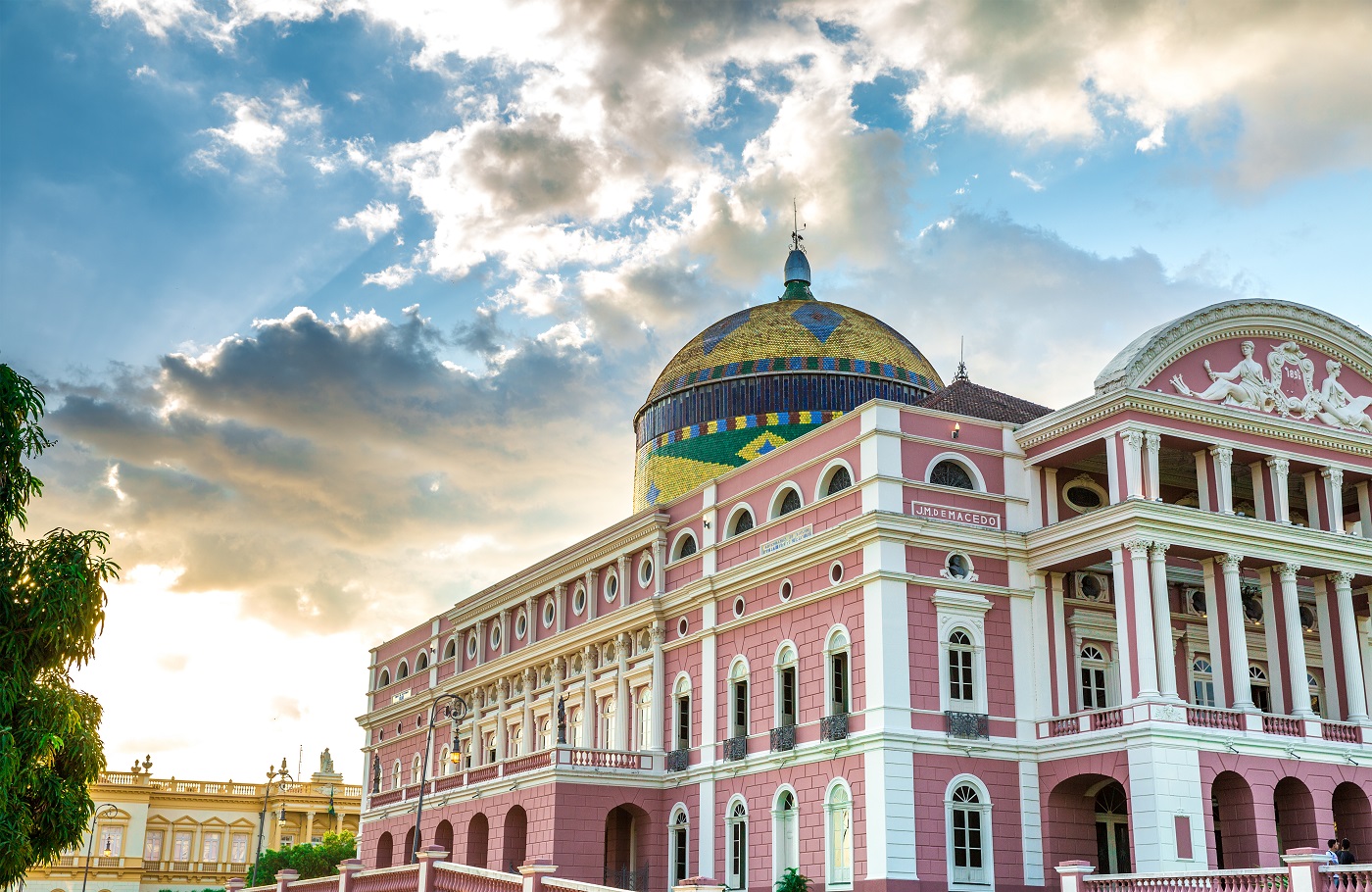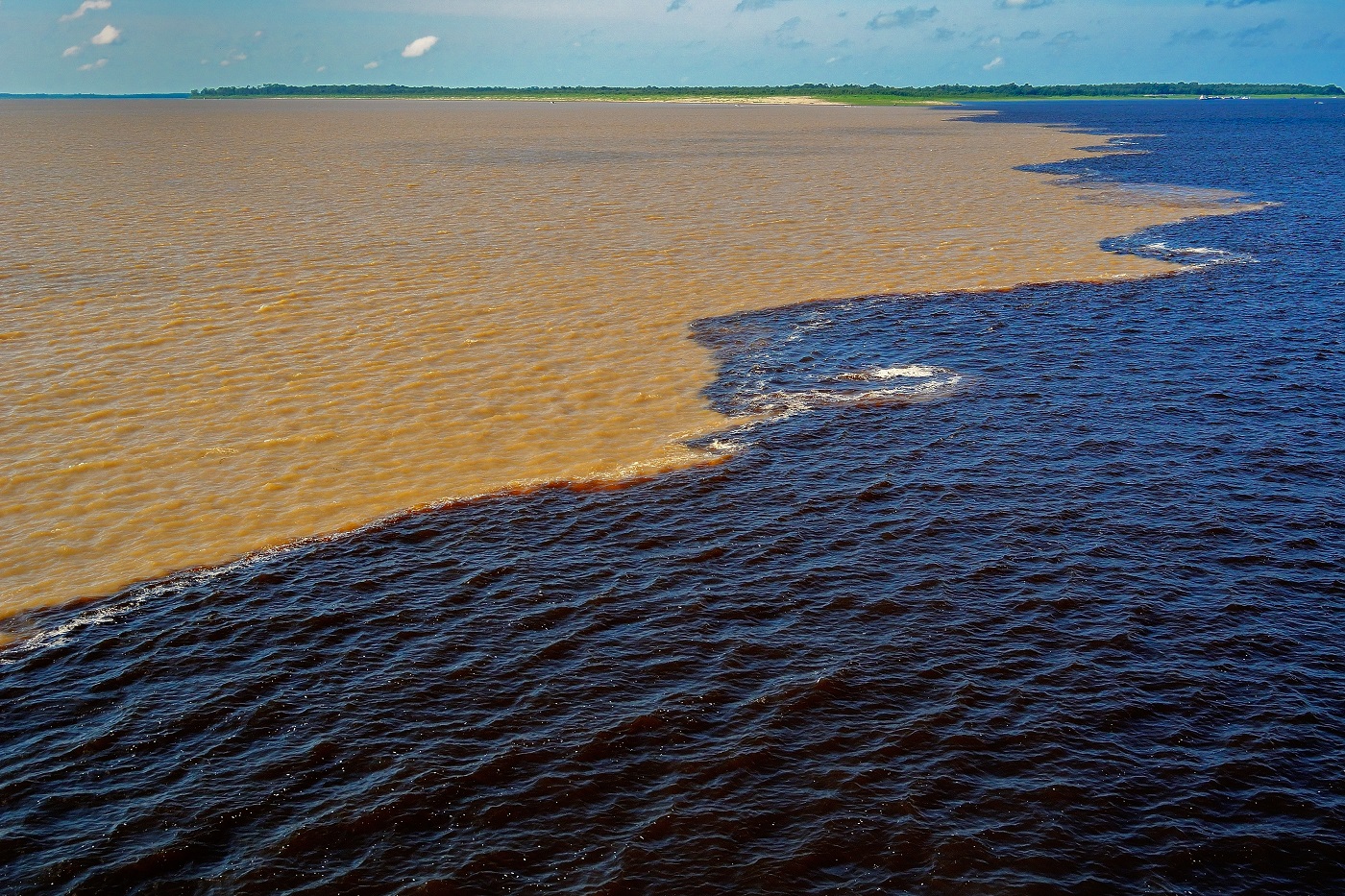Manaus celebrates 350 years on the river Amazon

Manaus...
Many people have never heard of it. It’s the largest city in Amazonia, currently home to 2.1 million people, mostly immigrants from elsewhere in Brazil and beyond. It rises incongruously from a blanket of rainforest, with silvery skyscrapers punctuating the horizon. It’s a city which even now is usually reached by air or river - attempts have been made to build a trans-Amazonia highway, but they have always failed, as the greedy jungle reclaims the cleared land in the blink of an eye. A remote, tumultuous port, 1,600km from the sea yet accessible to ocean-going ships, it has a long history of global-scale events and upheavals, and the vestiges of these are everywhere to be seen. The almost obscene affluence brought by the rubber boom, the extravagance of the famous Opera House, its 19th century wrought iron market, the boom (and maybe bust) of techno industries, the hub of eco-tourism – it’s seen it all.

Now the city is about to celebrate its 350th anniversary, it’s a good time to take stock.
The city began life as a fort and mission founded by the Portuguese in 1669. It sits close to the junction of the coffee-hued Solimões and tea-black Negro rivers, which merge to form the Amazon proper - the differentially coloured waters running alongside each other until eventually merging, a fascinating sight for visitors.

The city’s economy jogged along with a role as a market town serving Amazonian communities and exporter of rainforest products such as Brazil nuts and jute until, in the late 1800s it became the centre of the world’s rubber trade. Huge fortunes were accrued by the rubber barons who flocked to the port, constructing grandiose mansions which survive to this day. It was during this period of affluence that the famous Opera House was built, an extraordinary belle époque edifice which is still the city’s piece de resistance. Major artists of the period such as Caruso and Sarah Bernhardt performed there and nowadays you can still attend live performances - the theatre has its own orchestra, and there is a music festival every year in April/May. A mélange of European and Middle-Eastern styles, its dusty pink façade dominates the yawning square Largo de São Sebastião (now a focal point for visitors with a raft of pavement bars and cafés, and which hosts occasional live musical and other cultural events). The European influence prevailed: the municipal market, inspired by Les Halles in Paris, was designed by Eiffel, while the port installations were conceived by a British company in the early 19th century, using steel and glass imported from Europe, with a customs house, a stone quay, storehouses, and floating wharves.
The rubber industry went into decline in the 1920s with the introduction of rubber production in Asia. The city of Manaus followed suit. Only in 1967 did things begin to pick up when the area was declared a duty-free zone by the government.
When I first went to Manaus 35 years ago, it was still a ramshackle place, pretty chaotic, dirty and rumbustious. Atmospheric, certainly; with a whiff of danger, but not a place to linger for long. The economic engine centred on the free-port’s industrial zone, and skyscrapers pierced the skyline, but the hinterland and river frontage were crammed with scruffy favelas (unofficial, unplanned, higgledy-piggledy and distinctly modest neighbourhoods).
For visitors, it was then, and still is, the jumping off point for expeditions into the Amazon jungle, with just a few quite modest tourist hotels and a clutch of back-packer style hostels. The city had a frontier feel, especially down at the port, where a jumble of wooden river boats jostled for space on a muddy quay framed by hammock shops.

But in the 21st century the city has witnessed a bit of a renaissance. On a more recent visit, I was both astonished and delighted to see how much more appealing it was as a place to spend a couple of days. The Opera House and market have had a make-over. Central favelas have been cleared and their inhabitants relocated, making way for a series of landscaped parks. The whole centre was spruced up in advance of the 2014 World Cup, and a purpose-built stadium is now home to the local team. Its income boosted by technology and associated industries, the city hosts visitors from many countries, notably China, which has invested heavily in electronics here.
The port and industrial installations along the river frontage of Manaus stretch for over 35km. But the new road bridge across the Amazon – the Rio Negro Bridge - opened in 2011 – promises rapid urban and commercial development on the other side. There, land prices have soared, and building proceeds apace.
So what can you do on a visit to Manaus?
If you are going there to pick up and Amazon cruise or stay at a jungle lodge, think about spending at least a day in this unique city.
• Take a tour of the Opera House, you may even be able to catch a performance.
• Consider visiting during one of the other festivals – the jazz festival every July, the Boi Manaus festival in October around the time of the city’s birthday (October 24), with tribal singers; New Year’s Eve celebrated in the Sambodromo with an extravagant firework display.
• Peruse the fish market, groaning with seafood and fish of many varieties, and the municipalmarket with its mountains of exotic fruits you may be completely unaware of - pirarucu and tambaqui, cupuaçu and bacuri.
• Watch the comings and goings down at the port where the old-style wooden riverboats still constitute the main form of public transport for communities along the riverbank.
• Visit the city’s Botanical Gardens, in the city’s museum (MUSA), featuring huge ceiba trees and water-lilies, and an observation tower looking out over the rainforest.
• Just outside town, take a tour to the Meeting of the Waters or at the ecological park at the river Janauari, bursting with wildlife and dotted with floating restaurants.
• Take a cab out to the river beach at Punta Negra, and toast your visit to this fascinating city with a caipirinha as you bathe in the glow of an apricot sunset.
• To get a real feel for the place stay in town close to the centre at one of a number of new smallish hotels with a boutiquey feel, often occupying converted colonial buildings. We recommend the charming Hotel Villa Amazonia.
Tailor-made holidays
Flexible, custom-made holidays to Latin America created to match your exact requirements: our tailor-made itineraries are as unique as the clients for whom they are designed.
Design my trip


























